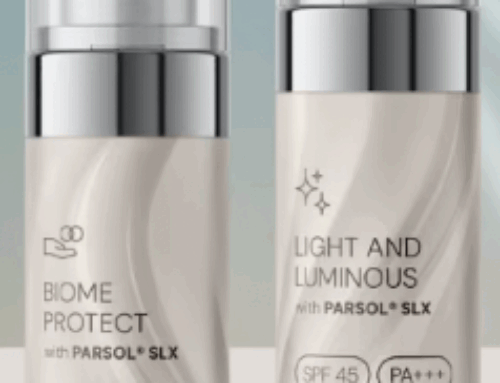As we live in an increasingly digital world, screen time has become a significant part of our daily lives. Along with the convenience of smartphones, laptops, and other electronic devices, there’s a growing concern over the potential effects of blue light exposure on our skin. While much has been discussed about how blue light affects our sleep patterns and eye health, recent research suggests that blue light causes harm to the skin. Consequences for constant blue light on skin health include the potential for premature aging, hyperpigmentation, and inflammation.
What is Blue Light?
Blue light is a high-energy visible light that is emitted by digital screens, fluorescent lighting, and the sun. While blue light from the sun is naturally filtered by the atmosphere, the blue light emitted from screens and artificial lighting sources can be much more direct and prolonged. This has raised concerns about the long-term exposure to blue light from screens, especially with the average person spending hours daily in front of devices.
Blue Light and Skin Damage
Blue light penetrates deeper into the skin compared to other forms of visible light. According to research, blue light reaches the dermis, the deeper layer of the skin where vital structures like collagen and elastin are located. These proteins are responsible for the skin’s elasticity, firmness, and youthful appearance.
When blue light interacts with the skin, it generates oxidative stress, creating free radicals—unstable molecules that can damage skin cells. This oxidative stress accelerates the breakdown of collagen and elastin, leading to premature aging signs such as wrinkles, fine lines, and sagging. Over time, the cumulative effect of this damage can result in a loss of skin texture and elasticity, contributing to photoaging, a process traditionally associated with UV exposure.
Blue Light and Hyperpigmentation
Another concerning effect of blue light exposure is its potential to trigger hyperpigmentation. Hyperpigmentation occurs when the skin produces excess melanin, the pigment responsible for the color of our skin. Blue light has been shown to activate melanocytes, the cells that produce melanin. This activation can lead to the formation of dark spots or patches, which can worsen existing pigmentation issues, especially in individuals with darker skin tones.
Studies suggest that prolonged exposure to blue light, particularly from close-range screens, may exacerbate these pigmentation problems. While UV light has long been associated with pigmentation changes, blue light’s role in the development of dark spots is gaining attention, as it is more widespread and harder to avoid than sunlight.
Blue Light and Inflammation
In addition to its role in accelerating skin aging and causing hyperpigmentation, blue light has been shown to induce inflammation in the skin. This inflammation occurs as the skin’s response to the oxidative stress created by blue light exposure. Chronic inflammation can further damage skin cells, leading to a weakened skin barrier, increased sensitivity, and an overall compromised skin appearance.
For individuals with existing skin conditions such as acne or rosacea, the inflammatory effects of blue light could worsen flare-ups, making it harder to manage and treat these conditions. The prolonged exposure to blue light might not only intensify the inflammation associated with these disorders but also promote longer recovery times for irritated skin.
Protect Your Skin from Blue Light
Given the growing concern about blue light’s impact on the skin, there are several strategies that can help minimize its potential damage.
- Use Sunscreen: While sunscreen is primarily associated with UV protection, many modern sunscreens now offer defense against blue light as well. Look for sunscreens that contain ingredients like zinc oxide or titanium dioxide, which provide broad-spectrum protection, including from high-energy visible light.
- Incorporate Antioxidants into Your Skincare Routine: Antioxidants like Vitamin C, Vitamin E, and niacinamide can help protect the skin from oxidative stress caused by blue light. These ingredients neutralize free radicals, reducing the damage to skin cells and helping to maintain skin’s integrity.
- Limit Screen Time: Reducing the amount of time spent in front of screens can decrease the amount of blue light exposure. Simple strategies like the 20-20-20 rule—taking a break every 20 minutes to look at something 20 feet away for 20 seconds—can give both your eyes and skin a much-needed rest.
The impact of blue light on the skin is a growing area of concern, with research suggesting that prolonged exposure can contribute to premature aging, hyperpigmentation, and inflammation. As our screen time continues to increase, it’s essential to take steps to protect our skin from the potential long-term effects of blue light. By using the right skincare products, incorporating antioxidants into your routine, and limiting screen time, you can help preserve your skin’s health and maintain its youthful appearance.




